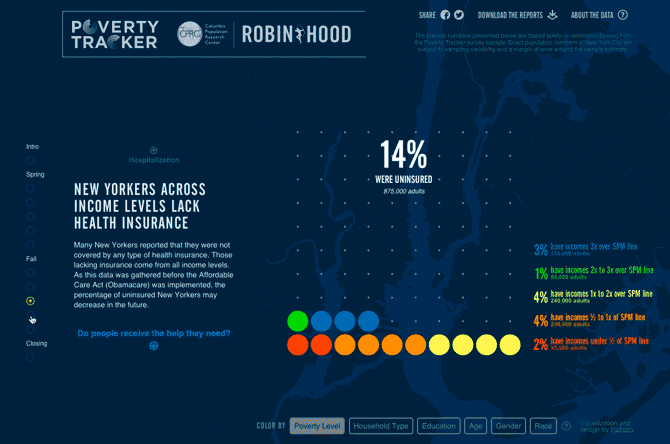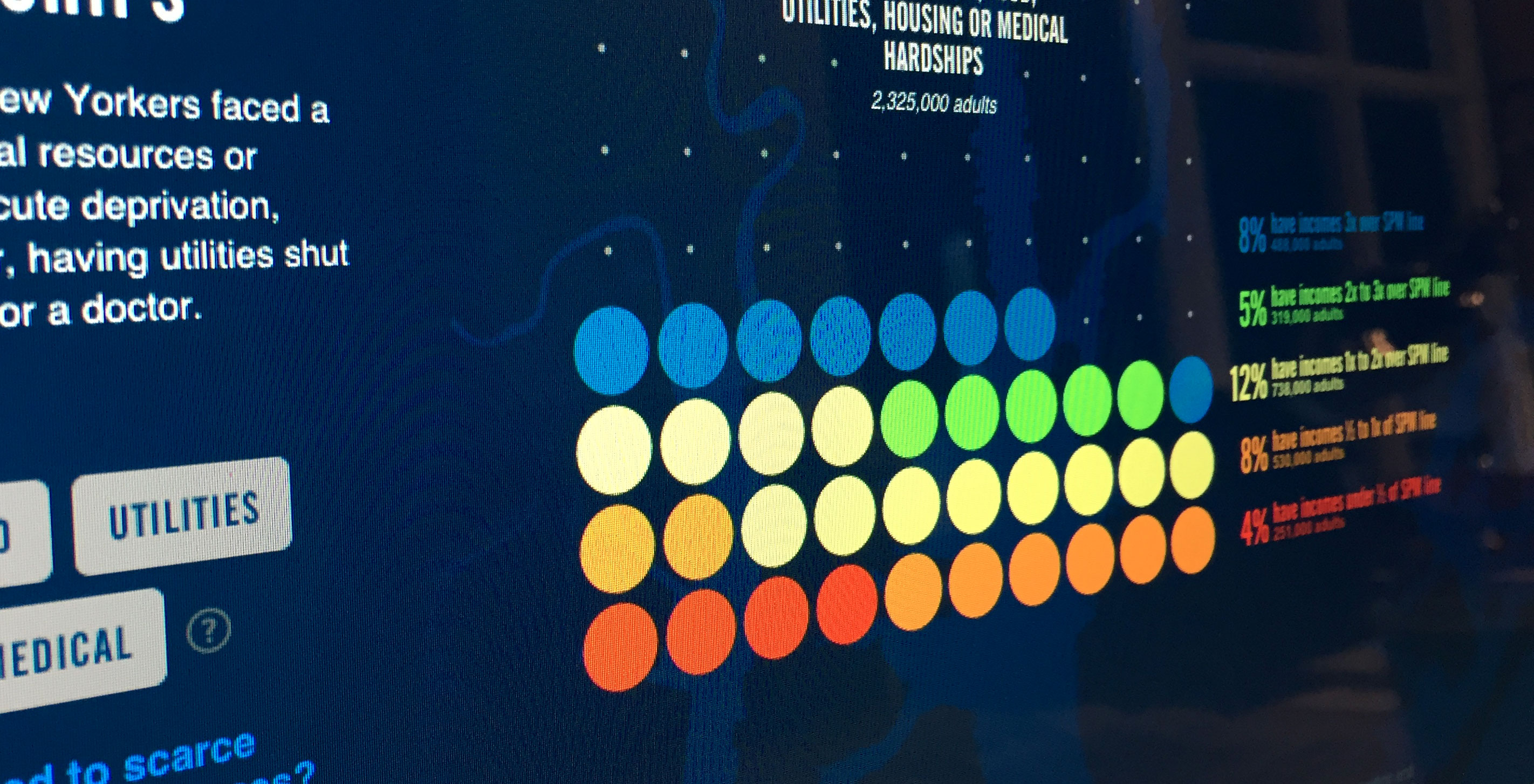Poverty, Health, and Neighborhood Services
Since its initial launch in the spring of 2014, we've recently finished updates to the
Poverty Tracker. The tool, built with
Robin Hood, shows how the Official Poverty Measure (OPM) underestimates the number of New York City residents suffering from financial poverty, material hardship, and health challenges. The recently developed Supplemental Poverty Measure (
SPM) gives a more accurate depiction of what it means to live in poverty by considering location, modern-day spending habits, and varying sources of income. The latest update incorporates new survey results from
Columbia University and Robin Hood to show how poverty is related to health and neighborhood services.

The Poverty Tracker measures the distribution of the population that experiences various forms of poverty and hardship, yet it's interesting to look further into the data to measure the likelihood of different experiences within each demographic.
The latest update delves into the relationship between poverty and health in New York City. While the proportion of residents at or below the poverty line experience chronic illnesses at a similar rate to the proportion living above the SPM line, those living below are more than twice as likely to be uninsured. To make matters worse, those below the SPM line are 20% more likely to be hospitalized.
While issues with health are tied more directly to poverty levels, problems with neighborhood services are cross-cutting. New Yorkers across income levels reported poor local services in health, sanitation, transportation, crime, and recreation.
Check out the site to learn more about poverty in New York City, and see the latest updates.
We’d love to hear what you’re working on, what you’re curious about, and what messy data problems we can help you solve. Drop us a line at hello@fathom.info, or you can subscribe to our newsletter for updates.

